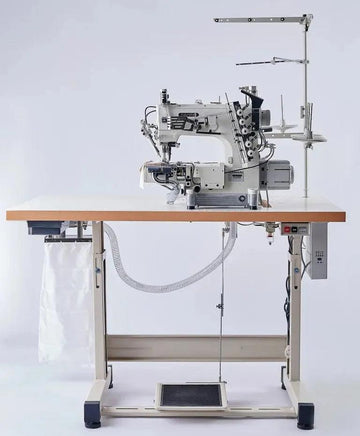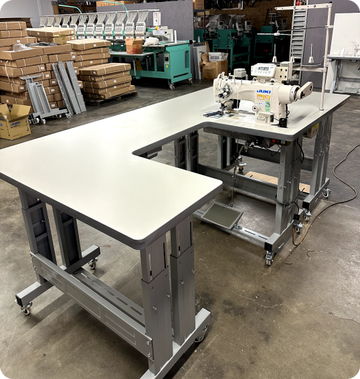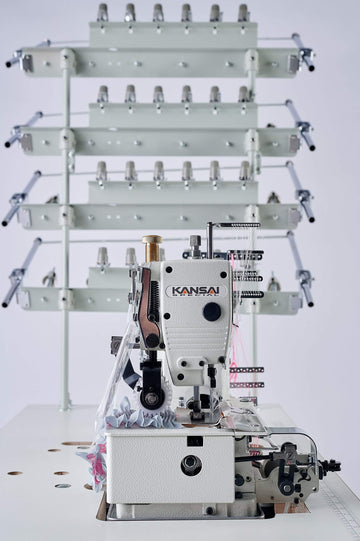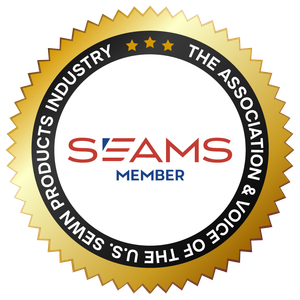If your stitches are too loose, uneven, or puckering your fabric, you’re not alone. Many operators struggle with industrial sewing machine tension problems—especially when switching fabrics or threads. Learning how to adjust tension on an industrial sewing machine properly is the key to producing smooth, professional-quality seams every time.
Whether you’re running a commercial shop in Los Angeles, managing a custom upholstery business in South El Monte, or operating a small production line anywhere in California, knowing how to control your machine’s thread tension can dramatically improve output quality and reduce costly downtime.
Understanding Industrial Sewing Machine Tension
Before jumping into the industrial sewing machine tension adjustment, it’s important to understand what tension does. In simple terms, tension controls how tightly the upper and lower threads pull against each other as they form a stitch.
If the tension is too tight, your fabric may pucker, or the thread might break. If the tension is too loose, stitches may loop or unravel. Proper industrial sewing machine thread tension ensures that the stitch forms perfectly in the middle layer of your fabric.
Industrial machines use a more complex tension mechanism than home models. They often have thread tension springs, multiple tension discs, and high-speed components that must be precisely balanced to maintain consistent performance.
Step-by-Step: How to Adjust Tension on an Industrial Sewing Machine
If your stitches aren’t looking right, follow this practical guide to controlling tension on an industrial sewing machine.
Check the Thread Path First
Before adjusting anything, make sure the thread is correctly installed. A single misthreaded guide or skipped disc can cause major industrial sewing machine tension problems. Always rethread your machine completely following the manufacturer’s diagram.
Inspect the Thread Tension Springs
The thread tension springs for industrial sewing machines help balance upper thread flow. If the spring is stretched, broken, or dirty, it may cause inconsistent tension. Replace worn springs to restore proper control.
Adjust the Top Tension Knob
The industrial sewing machine top tension knob controls the tightness of the upper thread. Turn the knob clockwise to increase tension and counterclockwise to loosen it. Test on a fabric scrap after each adjustment.
Check Bobbin Case Tension
If adjusting the top tension doesn’t fix the issue, the problem might be with the bobbin. The bobbin case screw fine-tunes the lower thread tension. Use small turns—about one-eighth of a rotation at a time.
Balance Both Threads
To achieve perfect balance, the upper and lower threads should meet in the middle of the fabric layer. If you see loops on top, tighten the upper tension. If loops appear on the underside, reduce it slightly.
Test with Different Fabrics
Different fabrics and thread weights require different settings. Always test your industrial sewing machine tension before starting a production run, especially when working with thick materials like canvas or thin ones like silk.
Common Industrial Sewing Machine Tension Problems
Even with experience, tension issues can appear. Here are some common problems and quick fixes:
-
Loose stitches: Increase top tension slightly.
-
Puckering fabric: Reduce top tension or use a lighter thread.
-
Uneven stitches: Clean the tension discs; lint buildup can cause drag.
-
Thread breaking: Check for burrs on the needle plate or tension discs.
-
Skipping stitches: Re-thread the machine and replace the needle.
By learning industrial sewing machine troubleshooting for thread tension, you can quickly identify whether an issue comes from the upper thread, bobbin, or mechanical components.
Maintaining the Tension Mechanism for Long-Term Performance
Routine maintenance can prevent most industrial sewing machine tension problems. Clean the tension discs regularly using compressed air or a soft brush. Avoid oiling the tension area—lubrication can cause slippage.
If you operate multiple machines in a commercial sewing setup, schedule regular tune-ups to ensure all industrial sewing machine tension mechanisms are calibrated properly. This not only improves stitch quality but also extends machine life and reduces downtime.
When to Call for Professional Service
Sometimes, even after adjustments, the issue persists. That’s when you should contact a certified technician. In California, many industrial sewing suppliers in Los Angeles and South El Monte offer expert tension calibration and part replacement services under warranty.
Professional technicians can check for hidden mechanical issues like worn discs, misaligned shafts, or damaged tension regulators that are hard to diagnose without specialized tools.
Choosing Quality Parts and Accessories
When replacing components such as thread tension springs for industrial sewing machines, always buy from trusted suppliers who provide factory-approved parts and a solid warranty. Using low-quality tension parts can lead to inconsistent stitch formation and unnecessary machine wear.
If you’re upgrading or setting up a new workstation, ensure your table and mounting setup are stable and aligned. A vibrating table can affect tension control and thread feeding, especially during high-speed operation.
Read Also: The Ultimate Guide to the Best Juki Industrial Sewing Machines
Final Tips for Controlling Tension on an Industrial Sewing Machine
-
Always use high-quality thread designed for industrial machines.
-
Match needle size to fabric type and thread thickness.
-
Keep your industrial sewing machine top tension clean and free of lint.
-
Test tension every time you switch materials.
-
Document your ideal tension settings for future reference.
Conclusion
Understanding how to adjust tension on an industrial sewing machine isn’t just about technical precision—it’s about improving productivity, maintaining consistent quality, and ensuring your business runs smoothly.
With regular maintenance, careful testing, and the right components, you can master controlling tension on an industrial sewing machine and eliminate frustrating stitch problems for good.
Whether you’re sewing denim in Los Angeles, assembling upholstery in South El Monte, or managing a production line anywhere in California, proper industrial sewing machine tension adjustment guarantees stronger seams, higher efficiency, and professional results that stand out.










